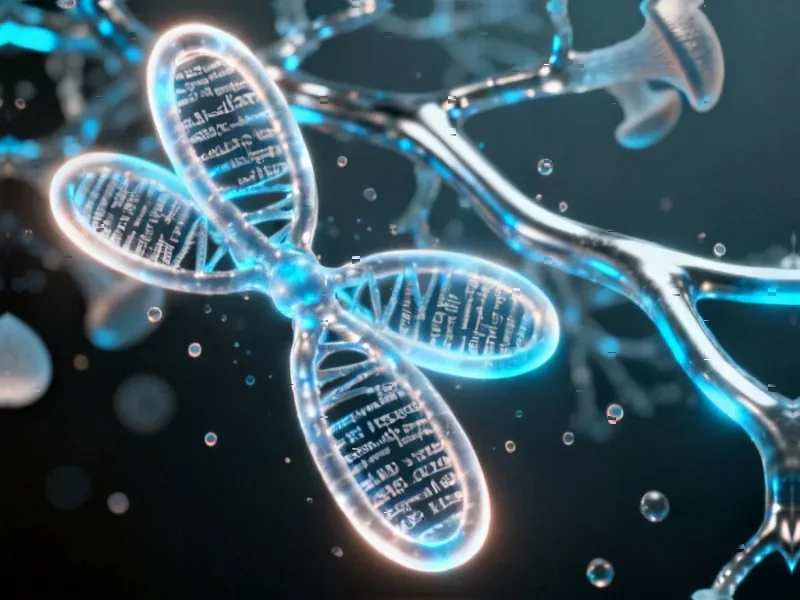Breakthrough in Catalyst Science
Scientists have discovered that water adlayers can facilitate the spontaneous migration of metal atoms between catalyst supports, according to recent research published in Nature Communications. This phenomenon, termed “metal spillover,” occurs under ambient oxygen and humidity conditions and represents a significant advancement in understanding catalyst behavior. The findings reportedly challenge conventional wisdom about metal-support interactions and open new possibilities for catalyst design.
Table of Contents
The Copper Spillover Phenomenon
Researchers demonstrated that copper nanoparticles initially supported on silica surfaces could migrate to cerium oxide surfaces when exposed to oxygen and water vapor at 50°C, sources indicate. Through comprehensive characterization using X-ray diffraction and electron microscopy, analysts confirmed that copper species completely redistributed from silica to ceria surfaces after 48 hours of treatment. The report states that this migration was undetectable under dry oxygen conditions, highlighting water’s crucial role in the process.
Time-of-flight secondary ion mass spectrometry analysis revealed a more than tenfold increase in copper-cerium bonding signals after oxygen/water treatment, according to the research. This provided direct evidence of copper atoms transferring from silica to ceria surfaces. The migration process shares mechanistic similarities with classical hydrogen spillover but represents the first documented case of metal atom spillover under such mild conditions.
Beyond Oxide Supports
The investigation extended to non-oxide materials, with nitrogen-doped carbon successfully serving as both donor and acceptor for copper species, the report states. Researchers observed similar migration behavior when using NC as either the initial support or destination material. This demonstrated that copper spillover isn’t limited to oxide-oxide interfaces but can occur across diverse material combinations, including between oxide and carbon-based supports.
Additional experiments revealed the phenomenon’s generality across multiple metal systems, with ruthenium, nickel, and cobalt also exhibiting similar migration behavior under oxygen/water atmospheres. The research suggests this represents a universal metal spillover process applicable to various catalytic metals and support combinations.
The Critical Role of Water Adlayers
Experimental evidence indicates that water molecules form continuous monolayers on support surfaces that serve as essential transport channels for metal migration, according to analysts. Solid-state nuclear magnetic resonance spectroscopy confirmed the presence of these water adlayers on various support materials under humid conditions. Thermogravimetric analysis quantified water adsorption capacities, revealing approximately monolayer coverage on silica, ceria, and nitrogen-doped carbon surfaces.
When researchers modified supports to create hydrophobic surfaces, copper spillover was completely suppressed, the report states. This crucial finding demonstrates that water adlayers are indispensable for the migration process. The absence of spillover on hydrophobic surfaces, despite identical treatment conditions, underscores the water layer’s role in facilitating metal atom transport.
Migration Mechanism and Intermediates
Quasi in-situ X-ray photoelectron spectroscopy identified copper-hydroxyl species as the active migration intermediates, analysts suggest. Density functional theory calculations supported these findings, showing that Cu-OH species possess higher mobility and lower diffusion barriers compared to non-hydroxylated copper. The formation of these hydroxylated intermediates appears to be the key step enabling metal atom mobility under mild conditions.
Researchers observed a kinetic isotope effect when comparing water versus heavy water treatments, with spillover efficiency approximately halved when using deuterium oxide. This kinetic evidence further corroborates that water-assisted transfer mechanisms govern the spillover process, according to the report.
Thermodynamic Control and Directionality
The spillover process demonstrates strong directionality preferences, migrating preferentially from weakly interacting donors to strongly interacting acceptors, sources indicate. Copper readily moved from silica or nitrogen-doped carbon to ceria surfaces, but reverse migration proved limited due to stronger metal-support interactions on ceria. This asymmetric behavior provides opportunities for designing directional spillover systems through careful selection of donor-acceptor pairs.
Experimental results show that spillover efficiency correlates directly with water content, with higher humidity levels doubling migration rates in some cases. This relationship enables potential control over the process through humidity regulation and surface hydrophilicity engineering, according to analysts.
Industrial Implications and Future Applications
The discovery of metal spillover under ambient conditions could revolutionize catalyst design and regeneration strategies, the report suggests. This phenomenon enables redistribution of metal species across support interfaces without requiring high-temperature treatments, potentially leading to more efficient catalyst systems and improved catalytic performance.
Researchers propose that comprehensive regulation of metal spillover requires multiparameter optimization involving tailored support properties, controlled atmospheres, and engineered donor-acceptor proximity. The ability to control metal distribution through humidity and surface chemistry adjustments offers new avenues for developing advanced catalytic systems with enhanced activity and stability.
Related Articles You May Find Interesting
- Rethinking Hybrid Work: Why Quarterly In-Person Collaboration Outshines Weekly O
- 1Password Subscription Discounted to $36 Annually in Security Promotion
- Secure Your Digital Operations: 1Password Enterprise Security at Just $36 Annual
- xAI’s Hollywood Training Ground: How Copyrighted Films Fuel Next-Gen Video AI De
- Deceptive by Design: How Industrial Systems Face Growing Threats from UX Manipul
References
- http://en.wikipedia.org/wiki/Electron_acceptor
- http://en.wikipedia.org/wiki/Copper(II)_oxide
- http://en.wikipedia.org/wiki/Silicon_monoxide
- http://en.wikipedia.org/wiki/X-ray_photoelectron_spectroscopy
- http://en.wikipedia.org/wiki/Calcination
This article aggregates information from publicly available sources. All trademarks and copyrights belong to their respective owners.
Note: Featured image is for illustrative purposes only and does not represent any specific product, service, or entity mentioned in this article.



